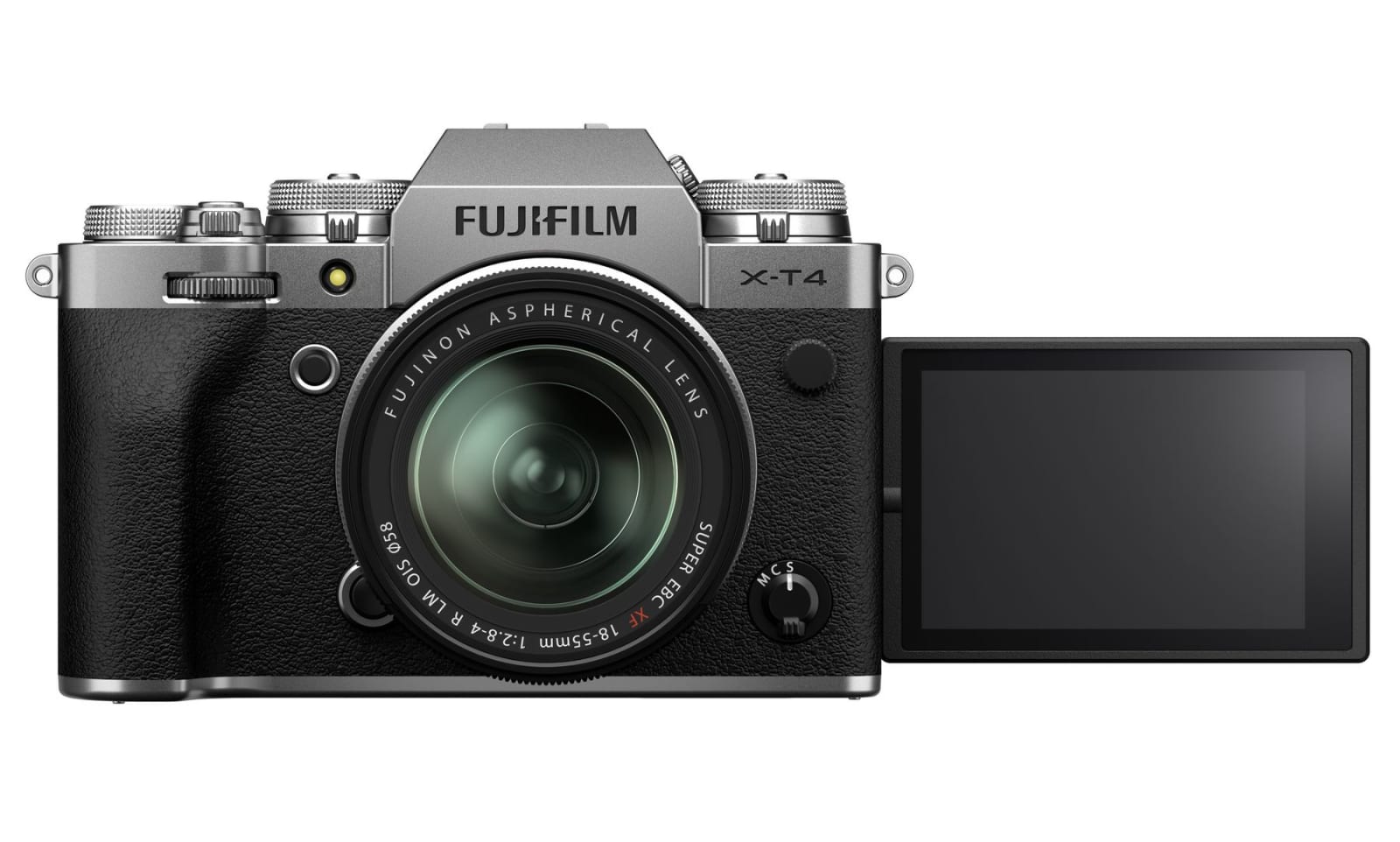
It was always going to be hard for Fujifilm to follow a well-reviewed camera like like the X-T3, especially when rumor sites have been creating unrealistic expectations. However, the X-T4 has finally arrived officially and on paper, it doesn't disappoint. While it uses the same 26.1-megapixel sensor as the X-T3, it now packs a feature that model was sorely missing: five-axis in-body stabilization (IBIS).
Fujifilm has only ever used IBIS on one camera: the X-H1. Now, it'll be on the much smaller X-T4 to smooth out handheld movie shooting and deliver 6.5 stops of stabilization with select XF lenses (or 5.5 stops without). That should make up for the fact that the X-T4 has the same sensor, as you'll be able to lower the shutter speed and still get sharp shots in low light.
Another big change is a new mechanical shutter that Fujifilm calls "the fastest and most robust in the history of the X Series." It'll let you shoot bursts at up to 15 fps with the mechanical shutter with full autofocus and auto exposure (or 20 fps with the electronic shutter), while lasting for up to 300,000 actuations. That kind of speed and shutter life is pretty incredible for a camera in this price range -- by comparison, Canon's 1DX Mark III can shoot at 16 fps with the mechanical shutter, but it costs $6,500.
The autofocus system is a lot faster, down to about .02 seconds, nearly matching what Sony can do. Tracking and face/eye detection performance has also seriously improved, with Fujifilm claiming the X-T4 has a success rate double that of the X-T3.
The rear display not only has more resolution (1.62 million pixels compared to 1.1 million on the X-T3), but it finally flips around fully so that you can see yourself for selfies or vlogging. There's also an updated electronic viewfinder (EVF) if you prefer to shoot that way, but it's got the same 3.69 million pixel resolution and 100 fps refresh rate as before.
You'll be able to shoot for longer, too, thanks to a much bigger 2,200 mAh battery (compared to 1,260 mAh on the X-T3) that can shoot 600 shots on a charge, compared to 390 before. Despite all the new additions, the X-T4 weighs has only gotten a few millimeters deeper, and weighs just 607 grams with a battery and memory card, compared to 526 grams for the X-T3.
The X-T4 doesn't have 6K video as was rumored, but it can still shoot 4K at 60 fps and now handles 1080p at an 240 fps -- double what the X-T3 can do. As before, 10-bit video can be recorded internally and externally with F-Log mode to maximize dynamic range. However, Fujfilm has introduced a View Assist function that boosts contrast and saturation for shot previews when using F-Log. Continuous autofocus subject tracking now works in lower lighting conditions (down to -6EV).
Video can be recorded to both UHS II SD cards at the same time for a backup, while the microphone setting can be switched between input and line levels. The bigger battery, image stabilization and fully-articulating screen will obviously also be a big help for cinematographers and vloggers, too.
The launch of the X-T4 makes me wonder about the future of the X-H1 lineup, as the new model is just as capable while being more stylish and compact. What's more certain is that Fujifilm is now well ahead of Sony in the APS-C category, as this model roundly beats Sony's APS-C flagship A6600 in terms of specifications (albeit at a higher price).
The X-T4 will go on sale in spring of 2020 for $1,700, which is $200 more than the X-T3 cost at launch. Given the extra features, though, it looks to be worth the price -- we'll know more once we do a full review.
via engadget.com





0 Response to "Fujifilm's new flagship X-T4 camera has in-body stabilization"
Post a Comment